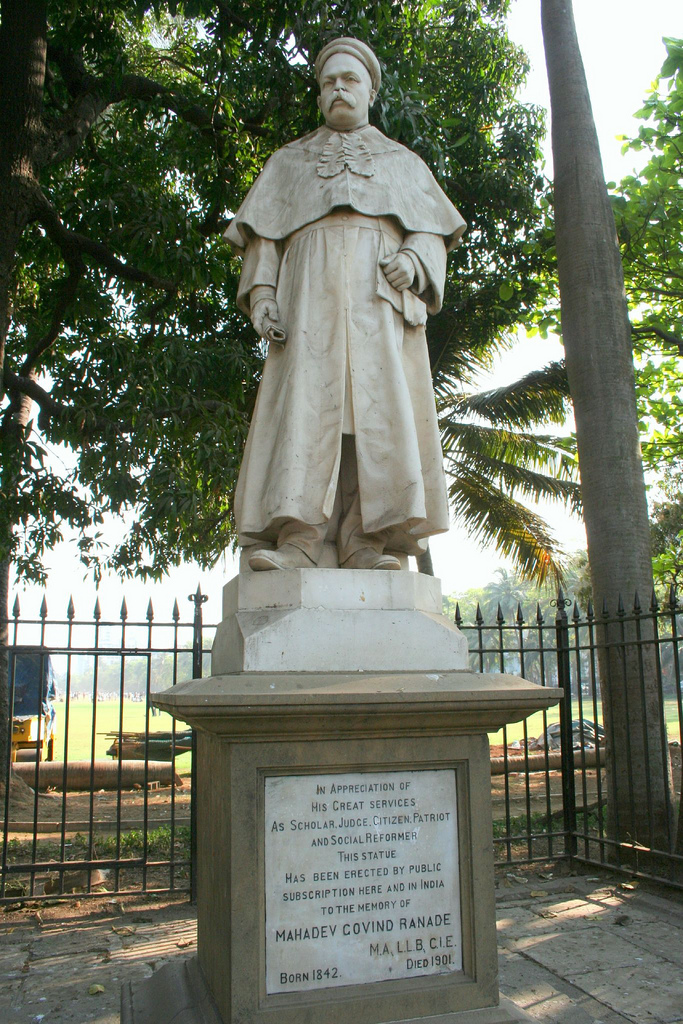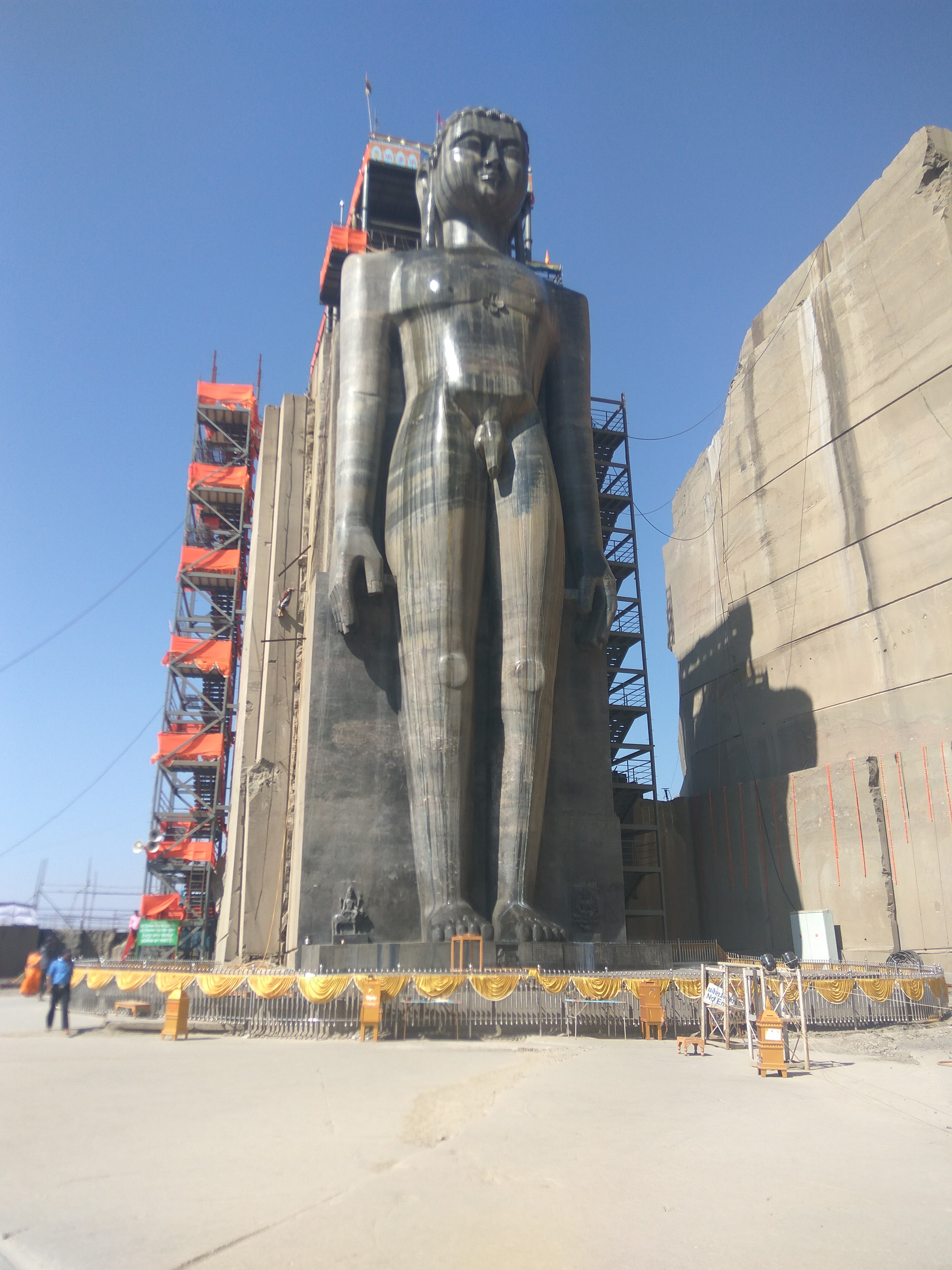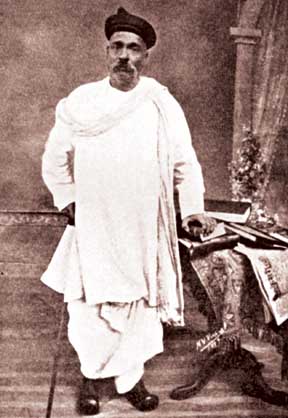|
Justice Mahadev Govind Ranade
Rao Bahadur Mahadev Govind Ranade (18 January 1842–16 January 1901), popularly referred to as Nyayamurti Ranade (lit. Justice Ranade), was an Indian scholar, social reformer, judge and author. He was one of the founding members of the Indian National Congress party and held several designations such as Member of the Bombay Legislative Council and Member of the Finance Committee at the Centre. He was also a judge of the Bombay High Court, Maharashtra. As a well-known public figure, his personality as a calm and patient optimist influenced his attitude towards dealings with Britain as well as reform in India. During his life, he helped establish the '' Poona Sarvajanik Sabha'', Maharashtra Granthottejak Sabha and '' Prarthana Samaj''. He also edited a Bombay Anglo-Marathi daily paper—The '' Induprakash'', founded on his ideology of social and religious reform. He was accorded the title of Rao Bahadur. Early life and family Mahadev Govind Ranade was born into a Chitpavan B ... [...More Info...] [...Related Items...] OR: [Wikipedia] [Google] [Baidu] |
Rao Bahadur
Rai Bahadur (in North India) and Rao Bahadur (in South India), R.B., was a title of honour bestowed during British Raj, British rule in India to individuals for outstanding service or acts of public welfare to the British Empire, Empire. From 1911, the title was accompanied by a medal called a Title Badge (India), Title Badge. Translated, ''Rai'' or ''Rao'' means "King", and ''Baghatur, Bahadur'' means "Brave". Bestowed mainly on Hindus, the equivalent title for Muslim and Parsi subjects was ''Khan Bahadur''. For Sikhs it was ''Sardar Bahadur''. The title was given to recognise and reward individuals who had made significant contributions in various fields such as public service, commerce, industry, and philanthropy. Those awarded the Rai Bahadur title were usually drawn from the lower rank of Rai Sahib, both of which were below the rank of Dewan Bahadur. These titles were subordinate to the two orders of knighthood: the Order of the Indian Empire and the higher Order of the S ... [...More Info...] [...Related Items...] OR: [Wikipedia] [Google] [Baidu] |
Bombay High Court
The High Court of Bombay is the High courts of India, high court of the States and union territories of India, states of Maharashtra and Goa in India, and the union territory of Dadra and Nagar Haveli and Daman and Diu. It is seated primarily at Mumbai (also known as Bombay), and is one of the oldest high courts in India. The High Court has circuit benches at Nagpur and Aurangabad in Maharashtra and at Porvorim in Goa. The first Chief Justice of India, Chief Justice, the Attorney General of India, Attorney General and the Solicitor General of India, Solicitor General of independent India were from this court. Since Independence of India, India's independence, 22 judges from this court have been elevated to the Supreme Court of India, Supreme Court and 8 have been appointed to the office of Chief Justice of India. The court has original jurisdiction in addition to its appellate jurisdiction. Judgments issued by this court can be appealed only to the Supreme Court of India. The ... [...More Info...] [...Related Items...] OR: [Wikipedia] [Google] [Baidu] |
History
History is the systematic study of the past, focusing primarily on the Human history, human past. As an academic discipline, it analyses and interprets evidence to construct narratives about what happened and explain why it happened. Some theorists categorize history as a social science, while others see it as part of the humanities or consider it a hybrid discipline. Similar debates surround the purpose of history—for example, whether its main aim is theoretical, to uncover the truth, or practical, to learn lessons from the past. In a more general sense, the term ''history'' refers not to an academic field but to the past itself, times in the past, or to individual texts about the past. Historical research relies on Primary source, primary and secondary sources to reconstruct past events and validate interpretations. Source criticism is used to evaluate these sources, assessing their authenticity, content, and reliability. Historians strive to integrate the perspectives o ... [...More Info...] [...Related Items...] OR: [Wikipedia] [Google] [Baidu] |
Bachelor Of Arts
A Bachelor of Arts (abbreviated B.A., BA, A.B. or AB; from the Latin ', ', or ') is the holder of a bachelor's degree awarded for an undergraduate program in the liberal arts, or, in some cases, other disciplines. A Bachelor of Arts degree course is generally completed in three or four years, depending on the country and institution. * Degree attainment typically takes five or more years in Argentina, Brazil, Chile, and Peru. * Degree attainment typically takes four years in Afghanistan, Armenia, Azerbaijan, Bangladesh, Brunei, Bulgaria, Canada (except Quebec), China, Egypt, Finland, Georgia, Ghana, Greece, Hong Kong, Indonesia, India, Iran, Iraq, Ireland, Jamaica, Japan, Kazakhstan, Kenya, Kuwait, Latvia, Lebanon, Lithuania, Malaysia, Mexico, Mongolia, Myanmar, Nepal, the Netherlands, Nigeria, Pakistan, the Philippines, Qatar, Russia, Saudi Arabia, Scotland, Serbia, Singapore, South Africa, South Korea, Spain, Sri Lanka, Taiwan, Thailand, Turkey, Ukraine, the United S ... [...More Info...] [...Related Items...] OR: [Wikipedia] [Google] [Baidu] |
Elphinstone College
Elphinstone College is one of the constituent colleges of Dr. Homi Bhabha State University, a state cluster university. Established in 1856, it is one of the oldest colleges in Mumbai. It played a major role in shaping and developing the educational landscape of the city. It also played a pivotal role in the inception of the University of Mumbai. The college has many notable alumni, including revolutionaries such as B. R. Ambedkar, Bal Gangadhar Tilak, Virchand Gandhi, Badruddin Tyabji, Pherozeshah Mehta, Nanabhai Haridas, Kashinath Trimbak Telang, Justice Mahadev Govind Ranade and Jamsetji Tata and teachers such as Dadabhai Naoroji. It played a key role in the spread of education in Mumbai. In 2019, it ended its affiliation with the University of Mumbai. In 2006, the college marked its sesquicentennial celebrations of inception (1856–2006). It offers undergraduate-level courses in the arts, sciences, and commerce. History By the 19th century, Mumbai was a pros ... [...More Info...] [...Related Items...] OR: [Wikipedia] [Google] [Baidu] |
Kolhapur State
The Kolhapur State was a Maratha princely state of India, under the Deccan Division of the Bombay Presidency, and later the Deccan States Agency. It was considered the most important of the Maratha principalities with the others being Baroda State, Gwalior State and Indore State. Its rulers, of the Bhonsle dynasty, were entitled to a 19-gun salute – thus Kolhapur was also known as a 19-gun state. The state flag was a swallow-tailed saffron pennant. Kolhapur State, together with its ''jagirs'' or feudatory vassal estates (including Ichalkaranji Jagir, Ichalkaranji), covered an area of 3,165 square miles (8,200 km2). According to the 1901 census, the state population was 910,011, of which 54,373 resided in Kolhapur Town. In 1901, the state enjoyed an estimated revenue of £300,000. History The Maharajas of Kolhapur have a common ancestry with the Bhonsle dynasty of Satara State, Satara, being direct descendants of the Maratha King Shivaji. The states of Satara and Kolhap ... [...More Info...] [...Related Items...] OR: [Wikipedia] [Google] [Baidu] |
Marathi Language
Marathi (; , 𑘦𑘨𑘰𑘙𑘲, , ) is a Classical languages of India, classical Indo-Aryan languages, Indo-Aryan language predominantly spoken by Marathi people in the Indian state of Maharashtra and is also spoken in Goa, and parts of Gujarat, Karnataka and the territory of Dadra and Nagar Haveli and Daman and Diu. It is the official language of Maharashtra, and an additional official language in the state of Goa, where it is used for replies, when requests are received in Marathi. It is one of the 22 scheduled languages of India, with 83 million speakers as of 2011. Marathi ranks 13th in the List of languages by number of native speakers, list of languages with most native speakers in the world. Marathi has the List of languages by number of native speakers in India, third largest number of native ... [...More Info...] [...Related Items...] OR: [Wikipedia] [Google] [Baidu] |
Nashik District
Nashik district,(Marathi: Help:IPA/Marathi, [n̪ɑɕɪk]) formerly known as Nasik district, is a district in Maharashtra, India. The city of Nashik is the administrative headquarters of the district. Nashik is well known for the production of wine. Nashik is also known as Mini Maharashtra, because the climate and soil conditions of Surgana, Peth, Igatpuri resembles with Konkan. Niphad, Sinnar, Dindori, Baglan blocks are like Western Maharashtra and Yeola, Nandgaon, Maharashtra, Nandgaon, Chandwad blocks are like Vidarbha Region. Nashik is the biggest city in the district while Malegaon is the second biggest city. Manmad, Igatpuri, and Sinnar are some of the big cities situated in the Nashik District. Manmad is one of the biggest railway junctions in India while the city of Malegaon is famous for its powerloom. Nashik district is the third largest district in Maharashtra state in terms of population of 8,107,187 and occupying an area of 15,582 square kilometres in the north Maharas ... [...More Info...] [...Related Items...] OR: [Wikipedia] [Google] [Baidu] |
Taluk
A tehsil (, also known as tahsil, taluk, or taluka () is a local unit of administrative division in India and Pakistan. It is a subdistrict of the area within a district including the designated populated place that serves as its administrative centre, with possible additional towns, and usually a number of villages. The terms in India have replaced earlier terms, such as '' pargana'' ('' pergunnah'') and '' thana''. In Andhra Pradesh and Telangana, a newer unit called mandal (circle) has come to replace the tehsil system. A mandal is generally smaller than a tehsil, and is meant for facilitating local self-government in the panchayat system. In West Bengal, Bihar, Jharkhand, community development blocks (CDBs) are the empowered grassroots administrative unit, replacing tehsils. Tehsil office is primarily tasked with land revenue administration, besides election and executive functions. It is the ultimate executive agency for land records and related administrative matters ... [...More Info...] [...Related Items...] OR: [Wikipedia] [Google] [Baidu] |
Chitpavan
The Chitpavan Brahmin or the Kokanastha Brahmin is a Hindu Maharashtrian Brahmin community inhabiting Konkan, the coastal region of the state of Maharashtra. Initially working as messengers and spies in the late seventeenth century, the community came into prominence during the 18th century when the heirs of Peshwa from the Bhat family of Balaji Vishwanath became the de facto rulers of the Maratha empire. Until the 18th century, the Chitpavans were held in low esteem by the Deshastha, the older established Brahmin community of Karnataka-Maharashtra region. As per Jayant Lele, the influence of the Chitpavans in the Peshwa era as well as the British era has been greatly exaggerated because even during the time of the most prominent Peshwas, their political legitimacy and their intentions were not trusted by all levels of the administration, not even by Shivaji's successors. He adds that after the defeat of Peshwas in the Anglo-Maratha wars, Chitpavans were one of the Hindu c ... [...More Info...] [...Related Items...] OR: [Wikipedia] [Google] [Baidu] |
Ranade Statue
Ranade is a family name, common among the Chitpavan Brahmin community in Western Maharashtra, India. Ranade family originated from Bhatgaon, Guhagar Ratnagiri. Each year Ranade family celebrates Mahashivratri utsav at Asud , Vyaghreshwar Near Dapoli, Ratnagiri Notable people Notable people with the surname include: *Mahadev Govind Ranade (1842–1901) – Indian scholar, social reformer and author * Ramabai Ranade (1862–1924) – Indian women's rights activist, Mahadev Ranade's wife *Ramachandra Dattatrya Ranade Ramchandra Dattatrey Ranade (1886–1957) was an Indian scholar-philosopher-saint of Karnataka and Maharashtra. Biography He was born on 3 July 1886 in Jamakhandi, in Bagalkot District of Karnataka. After completing his schooling he studied ... (1886–1957) – scholar of Indian philosophy * Eknath Ranade (1914–1982) – Indian activist * Mohan Ranade (born 1929) – Indian freedom fighter * Piyush Ranade (born 1983) – Indian television and film actor * ... [...More Info...] [...Related Items...] OR: [Wikipedia] [Google] [Baidu] |
Induprakash
''Indu Prakash'' was an Anglo - Marathi periodical published from Bombay in the late 1800s and early 1900s. Established by Vishnu Parshuram Pandit in 1862, it was published as a weekly bi-lingual periodical and often contained articles supporting the Indian freedom movement The Indian independence movement was a series of historic events in South Asia with the ultimate aim of ending British colonial rule. It lasted until 1947, when the Indian Independence Act 1947 was passed. The first nationalistic movement to ... and criticism of the British colonial rule. It was later merged in Lokmanya . Ranade, Telang, Chandwarakar, Parvate were involved in success of Induprakash. K.G.Deshpande who was in charge of Induprakash requested Sri Aurobindo to write about the current Political situation. Aurobindo Ghosh began writing a series of fiery articles under the title "New Lamps for Old" where in he strongly criticised the Congress for its moderate policy The newspaper's name mean ... [...More Info...] [...Related Items...] OR: [Wikipedia] [Google] [Baidu] |






